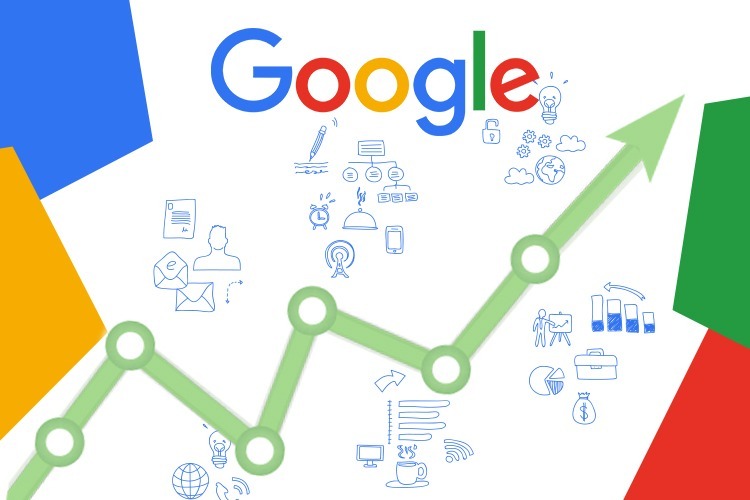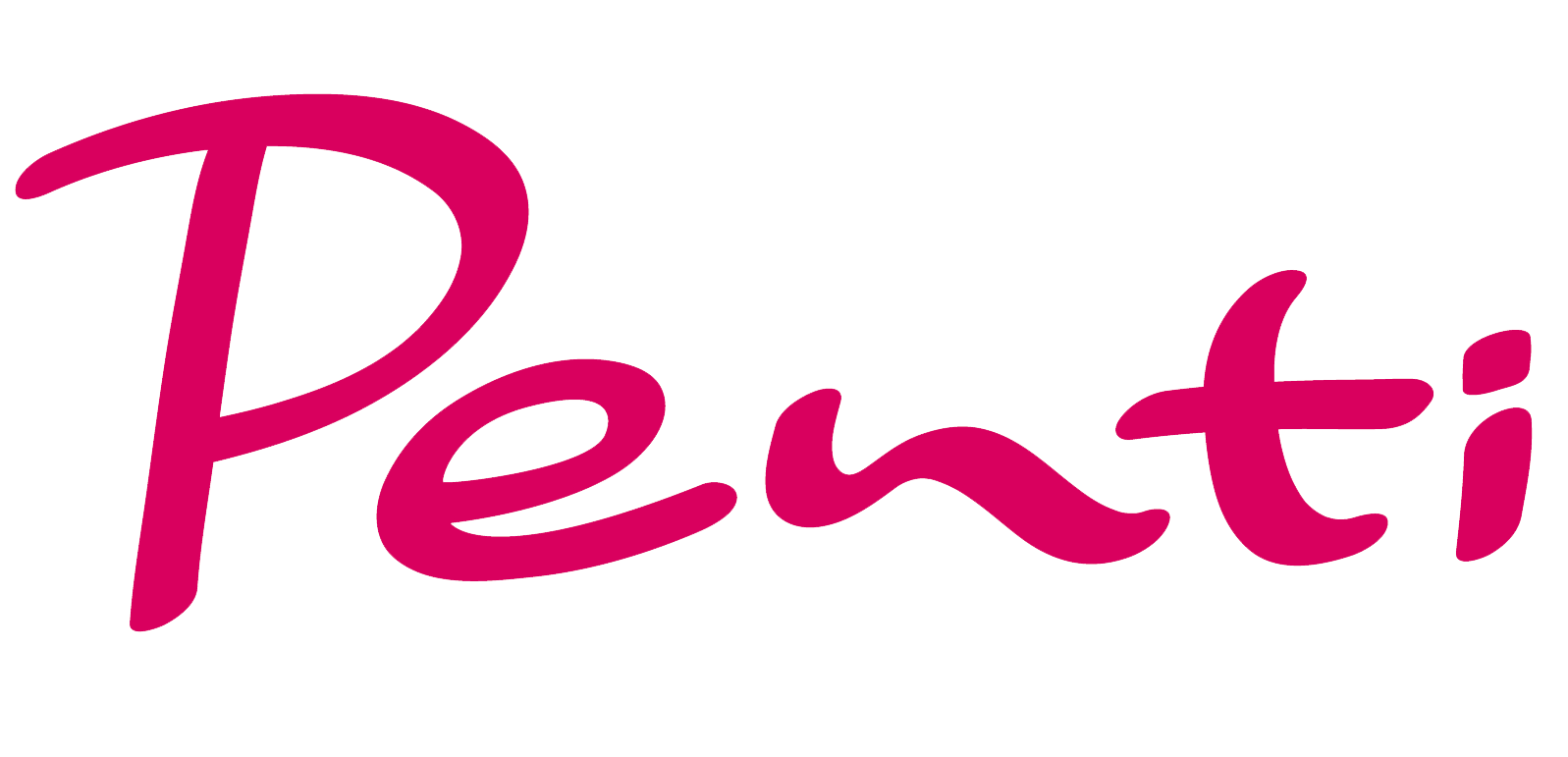Nothing is more frustrating than seeing your website rank on the umpteenth page of Google, despite your continued efforts to climb the ranks. Rank higher on google and Google first page.
Tips to Keep In Mind:
- There are 100s of ways to rank a page in Google, from simply sharing an article on Twitter, to scoring a link from the New York Times. This guide represents only one possible process.
- This checklist is meant as an SEO framework. It doesn't cover every scenario in detail, but instead provides you with a basic outline of ranking a webpage from start to finish, so you can build your own process on top of it.
- Many other experienced SEOs have their own processes for ranking for desired keywords. Choose carefully who you listen to, and seek out their advice whenever you can. Rank Higher On Google

1. Working Smarter, Not Harder
Here's the secret about this SEO process: we don't want to rank for a single keyword, we want to rank forühundredsüorüthousandsüof keywords at the same time.üWe can do this with the exact same amount of work.
Smarter, not harder. Google first page
The magic happens when starting with keyword research. Choosing the right (or wrong) keywords to target at this stage can predict our entire probability of success. Rank Higher On Google
Starting out, you probably have a guess which keywords you want to rank for,übut are they the right ones? The biggest mistakes people make at this stage of keyword research are:
- Choosing keywords thatüaren't specific enoughü(too broad)
- Choosing keywords withütoo much competition
- Keywordsüwithout enough traffic
- Keywordsünot relevant to your business
- Trying to rank for aüsingle keyword at a time
By far, the biggest mistake is trying to rank for a single keyword at a time. People search for the same things in very different ways. Or they search in very specific ways. This represents the long tail of keyword research, and it can represent up to 80% of all search traffic. Google first page
You want to capture as much of that long tail as possible, while doing the same amount of work.
Think of it as the difference between fishing with a spear, versus fishing with a net. Fishing with a spear, we might capture a single fish - or none at all if we miss. But fishing with a net might catch dozens of fish with a single throw.
So instead of ranking for a single keyword, let's start with a keyword seed that grows into a theme.
2. Start With A Mighty Seed
To begin, you want to discover your "Seed Keywords" to grow your keyword theme. Seed keywords are the basic, typically most obvious phrases. Google first page
Often, seed keywords are the phrases you "think" you want to rank for. If your shop sells motorcycle lifts, your first seed keyword may then likely be "buy motorcycle lifts."
Finding good keyword seeds is often a mix of brainstorming with a bit of research. A good seed answers the following questions:
- What's my website about and/or what do I offer?
- What keywords do IüthinküI want to rank for?
- What ads would I buy?
Good seeds are typically broad, but not too broad. For example, if you run an ice cream shop, the phrase "ice cream" might seem like a good seed, but it's probably too broad. ("ice cream" can mean many, many things.) A more specific phrase like "ice cream shop" or "ice cream shop Seattle" might work better.
There are typically three good places to find keyword seed.
- What keywords does my website already rank for?
- What do my competitors rank for?
- What do SEO tools reveal about what people search for? (Tools to find seed keywords include Keyword Explorer and Google Keyword Planner)
You need at least 1 keyword seed at this stage, but it doesn't hurt to have more, even dozens or hundreds of seeds if you're planning a larger content strategy. Google first page
Finding Keyword Seeds
Want more tips on how to find the best seeds? We've written an entire chapter. Read it here: Finding Keyword Seeds
3. List It Out: Dream Your Keyword Theme
Next, we want to grow our keyword seed into aükeyword theme, comprised of many related keywords grouped together.
Using keyword themes presents us with much larger opportunities. Instead of ranking for a single Holy Grail keyword, a better goal is to rank for multiple keywords focused around a single idea. Done right, the results are amazing. website rank on google
Simply put, the more long-tail keywords our webpage ranks for, the more qualified traffic search engines will send it.
Creating lists typically involves using a combination of Google and keyword tools (either free or paid) to find all the related keywords to your keyword seeds. Google first page
Typically, your list contains keywords with greater specificity. Your goal at this stage is to find keywords that are not only specific but also relevant to your business and have enough search volume to justify targeting. Google first page
For example, if our seed keyword was "motorcycle jacket" we might find the following related keywords. Google first page
Each of these new keywords supports our seed keyword, and gives us a ton of new content ideas. If the related keywords seem like they can support enough traffic, they may even become new seed keywords themselves. website rank on google
Here's why this works: by targeting a slightly broader keyword theme comprised of multiple, closely related keywords, our chances of ranking for these keywords actually increases dramatically. website rank on google
Keyword Lists
Become a keyword list master: How to Create Keyword Lists
4. Leverage The Competition
Here's a step many people miss:üranking for the hidden keywords your competition already ranks for.
No matter how smart you are, your competitors have already figured out—either by accident or design—which keywords are the most lucrative.
Instead of finding these lucrative keywords yourself through the long process of trial and error, it's 1000 times easier simply to steal your competitor's intelligence. (Most of the time, stealing is wrong, but we'll let it slide in the case of competitive SEO.) Google first page
The basics work like this:
- Find the URLs of your competitors that already rank for your target keyword
- Find all theüother related keywordsüthat URLüalsoüranks for in Google
These other related keywords are gold. Rank Higher On Google
Unfortunately, Google won't directly tell you what your competitors rank for, but a handful of 3rd party SEO tools do exactly that, making the work much easier. Here's what this data looks like in Keyword Explorer.
5. Finding Diamonds in the Google Rough
At this point, we likely have dozens or perhaps hundreds or thousands of potential keywords to work with.
The magic is choosingüexactly the rightükeywords to target and build content around.
Sorting and filtering keywords is an art in and of itself, but the basic requirements we want to meet are roughly:
- Does the keyword have sufficient search volume?
- Is this keyword relevant to my business? Google first page
- Can I create compelling content around this keyword that's better than anything else out there?
- Can I actually rank for this keyword?
The last question may be the most difficult to answer, but it's also one of the most important. Certain topics, such as medical and financial queries, can be especially challenging to rank for in Google.
PRO TIP: KEYWORD DIFFICULTY
One of the easiest ways to find out if you can rank for a keyword is to find the keyword difficulty score of your target keyword. Compare this number to the keywords with the highest difficulty score you already rank. More details here.
6. Creating Value
Want to know the absolute worst phrase in marketing?
It's "SEO content." Google first page
Far too many people think of content as a commodity: something predictably produced completely separated from the potential value it creates for end users.
Content without value is spam.
If you want to rank—if you really want to rank—you need to understand this question:
How is your content better than the content that currently ranks for your keyword?
Because if your content doesn't satisfy the user in aüsuperior wayüto content that already exists, why would Google rank you higher?
Starting with your keyword theme,üask first how you can create value.
Value takes many forms. While Google provides clues and guidelines about how they evaluate content, it typically includes a mix of utility, trust, authority, and user experience. In short, you want your website to be the one that most completely satisfies the user for their given keyword. Google first page
Making your content the absolute best not only helps satisfy your users, but it also helpsübuild links, improvesüuser engagement, andüprotects against future algorithmic changes.
How do we create value? We begin by figuring outüintent.
Here's where a lot of people stumble: You take your keyword and create content around it—maybe you create a blog post, maybe a shopping page—before youüreally understand what people are looking for with that keyword.
This is known asüintent.
Guessing at intent is like gambling. You may think you know what people want, but unless you verify, it's like throwing darts blindfolded.
Google's job is to give people web results that satisfy their questions, so if you don't satisfy intent, you'll likely not rank very well for very long. Google first page
Fortunately, there's a dead-simple way of determining keyword intent: search Google for your keyword phrase, and determine:
- What kind of pages are already ranking
- The common elements of each page, e.g. images, videos, shopping, etc
- What Google lists as "related searches"
Google has already tested your keyword across thousands or millions of searches, so they have a pretty good idea of what people are looking for.
For example, if our keyword phrase was "easter hats", we could write another blog post about easter hats, or we could examine what Google currently ranks:
From this, we see that Google determines the search intent of "easter hats" to be:
- Imagesüof Easter hats
- Shoppingüfor Easter hats
- Related searches aboutüEaster bonnets
If we wanted to rank for this keyword, we would be wise to create content that delivered on these elements. We would learn even more from diving into the individual pages themselves. Google first page
But is it enough to simply copy the form of these pages, and deliver answers that are just as good? No, no, no! There is a better way...
8. Be The Last Click
Number 8 on the checklist seems like a small thing, but it makes a world of difference.
Be theüabsolute best resultüfor your keyword query.
Sounds simple in theory, but literally all of your competition is trying to be the best as well, andüthere can be only one.
What does it mean to be the absolute best result? We'll cover a few techniques, but the ultimate goal is this:
Be the last click.
In other words, make sure when people search for your keyword—and they eventually find you—you are the last result they need to click. You provide such good information, they have no need to go back and click any other result. You may not be the first result they click (although that helps too) but you'll definitely be the last. Let's repeat that.
Be the last click. Rank Higher On Google
Which begs the question, how do you become the last click? The answer varies from query to query, and mixes a little bit of art and science, but to be the last click there are a number of check boxes you want to tick:
- Matchüuser intent, in form and style ✔️
- Provide moreücompleteüinformation
- Beüauthoritative
- Offer a better and/or unique experience, e.g. design, UX, speed
We've touched on user intent, so let's cover completeness. Google first page
9. Why Completeness Beats Length
"500 words, or 2000 words? That is the question."
Sorry, Shakespeare, that's actuallyünotüthe question.
The idea of contentülengthüarises in SEO quite often. "How long should your content be?"
Part of the reason is that multiple studies over the years consistently show that, on average, longer content tends to perform better in Google than shorter content. But smart SEOs believe that the reason this content performs better is not that it's longer, but because it actually offers moreücompleteness.
What is "complete" content? This is content that:
- Completely satisfiesüa user's search query (again, "be the last click")
- Offersüsupporting evidence
- Answers additionalürelated questionsüto the user's search query
- Isüauthoritativeü(in other words, gives the user a reason to trust the information)
- Provides qualityüsupplemental contentüto support the main content
From Google's perspective, there are several reasons why more complete content may perform better. We won't dive into all the science and details here, but a simplification may be that:
- Google constantly works to figure out what your content is "about." More complete content makes this job easier.
- More complete content tends to satisfy users.
To make our content more complete, and to appease the Google gods, we're going toüanswer all the user's questions. Read on!
10. Smart Topic Modeling (Without A Computer)
A huge hunk of Google's job is simply spent trying to figure out what your content is "about." This is easy for humans, but hard for computers. To accomplish this, they employ a lot of advanced techniques like Natural Language Processing (NLP), phrased-based indexing, and machine learning.
Fortunately, you don't need a bank of computers to optimize your content around a particular subject. (Though if you have the budget, there are plenty of good software companies that can deliver this service for you.)
If your aim is to make your content more complete, a basic process to implement might resemble:
- Focus on you primary topic (keyword) in your:
- Title tag
- URL
- Page Title
- Main Content of the page
- Images and/or video
- Use the list of your most important secondary topics/keywords from your keyword research and use them to support your main topic. If warranted, these can be used in subheads and/or become their own section.
- Similarly, incorporate your most important "related questions" (from your keyword research) into their own content sections.
- Be sure to satisfy user intent by incorporating elements and formats of top ranking results, including images and video formats.
- Enhance your Main Content with useful Supplemental Content, including additional helpful information in the sidebar and navigation of the page.
- If you can't address a deserving topic in the content itself, link out to a resource that does.
On the last note, it's typically ideal to link internally to one of your own pages if you can, but don't be afraid to link to other websites. Remember, you want toübe the last clicküso users don't have to go back to Google. When users get the answer from you (even when it's a link) you become more of an authority.
When done correctly, your research up to this point should help you create a page that thoroughly satisfies a user's query through complete content.
11. E-A-T Your Authority
Aside from content itself, Google employs a number of ranking signals to determine how authoritative and trustworthy a site is.
While this is especially true for medical and transactional sites (YMYL - Your Money or Your Life), in general Google holds all sites to certain "quality" standards - including yours!
Google's Search Quality Guidelines are filled with information about how Google wants to judge "quality." Many of these standards are not easy to control when creating your content (e.g. third-party reviews about you on other sites.)
That said, many of these "trust and authority signals" are certainly within your control, including the editorial standards of your writing. For this reason, it's good to review the questions Google has published for website owners in regards to its Panda algorithms and E-A-T guidelines. Questions which include:
- Would you trust the information presented in this article?
- Is this article written by an expert or enthusiast who knows the topic well, or is it more shallow in nature?
- Does the site have duplicate, overlapping, or redundant articles on the same or similar topics with slightly different keyword variations?
- Is the content free from spelling or stylistic issues?
- Was the content produced well, or does it appear sloppy or hastily produced?
For what it's worth, most professional SEOs don't believe these questions represent "hard" ranking factors (e.g. Google doesn't have an explicit "authority" score.) One hypothesis is that these qualities are scored and fed into a machine learning model, which then evaluates your content.
Regardless, at this point you have all the tools you need to create high-quality content.
12. CTR Starts Here: Be The First Click
Remember in step 8 when we said you want to be the last click (that a user needs)? Here, we offer complimentary advice which works hand-in-hand with that tip: Rank Higher On Google
Be the first click, too.
When presented with a page of search results, users make decisions about what to click in milliseconds. You might rank #1, #4, or #7, but you still want to attract as many clicks as possible. This is known as improving your click-through rate (CTR.)
While there's contradictory evidence as to whether or not Google uses clicks in its search results as a ranking factor, there's plenty of evidence to suggest that they do, including a Google patent that explains exactly how they might do it.
But honestly, it doesn't matter if clicks are an actual ranking signal or not, because more clicks means more qualified traffic,üone way or another. This is the goal, right?
Google gives you 4-5 primary levers to influence CTR:
- Titles
- Meta Description
- Rich Snippets
- URLs / Breadcrumbs
- In some cases, image and video results
For most sites, titles are typically the most influential factor you can leverage to influence CTR, followed by rich snippets (if you can get them.) Google displays a title for every page, and nearly every searcher at least glances at them before clicking.
13. On-Page: Master the Basics
Entire chapters could be written about on-page optimization (and we have!)
In truth—and this may seem counterintuitive—most of the time,üyou don't need to sweat the details. Don't get us wrong, on-page SEO is very, very important. But if you've followed the steps up to this point you've already covered most of the basics!
If you're new to SEO, you should absolutely make sure your website is friendly to search robots such as Googlebot. You can do this easily with online tools such as Hubspot's Website Grader or Moz's On-Page Grader, for example.
website rank on google And if you use Wordpress, plugins such as Rankmath will do a lot of the heavy SEO lifting for you.
We'll cover a few more salient aspects of on-page SEO in this guide, but if you find yourself unfamiliar with this topic, we highly recommend the following resources:
- A Visual Guide to Keyword Targeting and On-Page SEO
- On-Page SEO for 2019 (and beyond!)
- The Web Developer's SEO Cheat Sheet (below)
14. Schema All The Things
We want to take a moment to give schema markup its own callout. If content is king (or preferably, queen) then schema is certainly the crown prince of on-page SEO. website rank on google
Schema, while it doesn't appear on page for the user, is important for two very significant reasons:
- As additional content, it canühelp Google understand your page, thereby giving you a potential ranking boost in some circumstances.
- Schema can help you win a variety ofürich snippets, further boosting your CTR
To be clear, schema itself isn't a Google ranking factor. This means that you shouldn't expect a rankings boost simply because you added schema to your page.
That said, schema can help you to rank. Multiple studies have demonstrated this. Think of it as additional content that search engines can read, that also help it understand what your content is about.
At a minimum you should include standard schemas like Article and Local Business (if appropriate), but even more so you should consider schema to help earn your site rich snippets. Chief among these are:
- Breadcrumb
- Event
- FAQ
- How-To
- Video
15. Make it Fast, Make it Sing
Aside from content itself, how the user experiences your page can hugely influence rankings as well. Google calls these official ranking factors page experience signals, and include:
- Core Web Vitals (i.e. page speed)
- Mobile Friendliness
- Safe Browsing
- HTTPS
- Intrusive Interstitial (i.e. avoid aggressive popups)
Understand that having these qualities won't give you a big boost (for the most part.) Instead, these days they are simply table stakes, or the cost of admission. Having a mobile-friendly website is almost a requirement, and aggressive pop-ups are certain to put your rankings at risk. website rank on google
The one exception to this is speed. While website speed is admittedly only a minor ranking factor for most sites, it can exert outsized influence on several other factors, and the user experience itself. For example, page speed can significantly impact both bounce rate and conversion rates (even when rankings remain stable.)
Rank Higher On Google When in doubt, make it fast. Google first page
Further Reading: Page Speed Optimization: Metrics, Tools, and How to Improve
16. Over-Optimization: Titles, URLs, Stuffing, and Links
As SEOs, we like to get "perfect" scores. We like to optimize everything. It's even in our title!
But for newer sites, and sites without a lot of authority,üover-optimizationücan be a real drag.
What exactly is over-optimization? Google first page
In short, over-optimization means a lack of diversification in your SEO elements. For example, if your target keyword is "best plumber Seattle", over-optimization might look like:
- Your title tag is "best plumber Seattle"
- Your url https://best-plumber-seattle.c...
- Your H1 is "best plumber Seattle"
- You include the phrase "best plumber Seattle" 20-25 times on the page
- Most of your internal links (and external too) use "best plumber Seattle" as anchor text
On the web, over-optimization like this doesn't appear naturally, unless an SEO deliberately puts it there. As this can influence rankings, Google typically takes steps to demote pages with over-optimized keywords.
In short, don't over-optimize, diversify instead.
Here’s the special secret of this SEO checklist: Now that you've made a single page to rank, now you're going to make several more. website rank on google
This is the SEO magic that makes this process work. In truth, it's incredibly difficult to rank a single page by itself for a handful of keywords - especially if there's any competition at all.
On the other hand, when you create several pages around a central theme, or even an entire site around that theme, the job becomes exponentially easier. website rank on google
By creating multiple pages that address related (but different) aspects of your topic, you create a web of topical relevance that allows you to: Rank Higher On Google
- Interlink related pages...
- ...with topical anchor text
- Improve user engagement by answering more questions
Taken together, this strategy can improve the relevance of your site and pages for multiple queries.
18. Linking Internally for the Reasonable Surfer
Since we're now linking our topically related pages together, we now want to make sure to optimize our linking strategy for maximum SEO impact. website rank on google
Rank Higher On Google Links are a powerful ranking signal, but remember, not all links are equal. Google doesn't "count" all links the same.
How you link can be just as important (or more so) as what you link to. To leverage our links for maximum power, it's best to follow a few linking guidelines with every new page we create.
- Link to your most topically related content. The closer in relevance to your main topic, the more likely users will click on the links you provide. It's also widely believed that Google may pass more weight through topically relevant links (through a process known as Topic-Weighted PageRank.)
- When possible, try to link within your main content (as opposed to sidebars and navigation.)
- Additionally, try to link higher up within your main content, as these links may carry more weight than links further down the page. website rank on google
- Use anchor text with relevant keywords, but vary your anchor text greatly. In other words, don't repeatedly use the same anchor text over and over. Many SEOs recommend avoiding exact match keywords for anchor text, preferring partial match instead. website rank on google
Finally, after you've created a new page and linked to other pages on your site, you have one more step to go. Now it's time toüupdate your older pagesüwith links to your new page. We recommend not simply adding links to existing text, but addingücontext around the new links,üwhich can boost both the relevance and the freshness of the new links.
Just as we know not all links are equal, not all pages are equal either. Rank Higher On Google
Category and/or hub pages can be incredibly effective tools for ranking all your related pages higher. While it's important to link your topically relevant pages together, it may be even more important to link relevant pages together under the umbrella of a master category (hub) page. There are several reasons for this:
- Category pages often have more link equity. They often sit closer to the homepage (or other high authority pages) and often attract external link equity as well.
- Category pages often sit higher in a site's architecture hierarchy, meaning they are usually better placed in a site's navigation and breadcrumbs, for example.
- These pages often can rank for high-volume head terms (as opposed to lower-volume long tail terms)
- Category pages can target broader user intent than individual topic pages, and can serve as a jumping off point into deeper dives for each subject.
The wrong way to create category pages is to simply list your latest posts, or a list of relevant products. The best category pages typically have their own unique content, relevant answers to questions, and links to sub-topics and related pages.
For example, if your site sells 100 different types of hamster wheels, you probably want a broad category page that broadly covers all your hamster wheels. Rank Higher On Google
If such a page doesn't exist, you need to create one.
20. The 50/50 Rule of Link Building
Links are a powerful ranking factor. In fact, they might be the most powerful that we know of. If you want to rank, you almost certainly need links, but you've got to know the rules. website rank on google
Actually, there are two 50/50 rules of link building:
#1. Assume Google ignores 50% of your links, and only 50% of your links are good. In reality, we don't know how many links Google ignores, but it's good to assume this regardless. Google first page
Google will ignore or devalue links for many reasons. Among them:
- Irrelevance
- Manipulation (if they believe you've engaged in a pattern of linking that violates Webmaster Guidelines)
- Disavowed
- Links are marked nofollowed, or possibly "ugc" or "sponsored"
- Penalized domains
- And more
Earning links can be one of the most challenging jobs in SEO, so early on, it's tempting to go after the "easy" links, i.e. links you pay for, cheap directory links, blogroll links, etc. But as these are exactly the ones most likely to pass the least value, it's worth it to go after something better. website rank on google
As Google wants to reward high-quality, "natural" links (editorially given) - these are the links you want to pursue.üThe upper 50%.
Keep these two guidelines in mind:
- Theüharderüthe link, the more valuable it can be
- Theüeasierüthe link, the more likely it can hurt you
#2. When building link-worthy content,üspend 50% of your time actually creating the contentüitself, andü50% of your time promoting it.
"If you build it, they will come."
Sorry. No they won't. Rank Higher On Google, website rank on google
Link building is typically anüactive endeavor. True, some types of content naturally earn links (and we'll incorporate these into our checklist.) But too many people create content and falsely believe the content is going to do all the work for them.
If you want to rank, you've got to roll up your sleeves and tell people about it.
Outreach is tough for some, but if you want to get better, we highly recommend reading these link building promotion tactics from our friends at Siege Media. Rank Higher On Google

 |
|
 |
|


 |
|